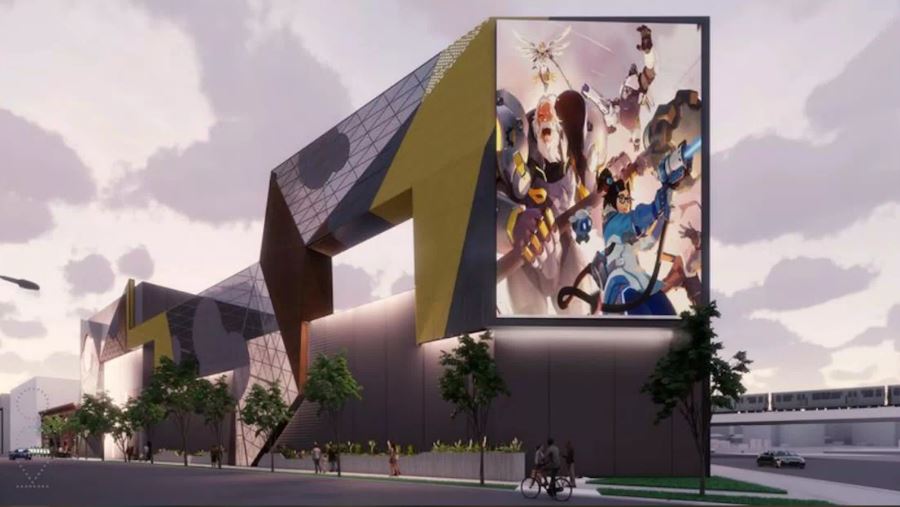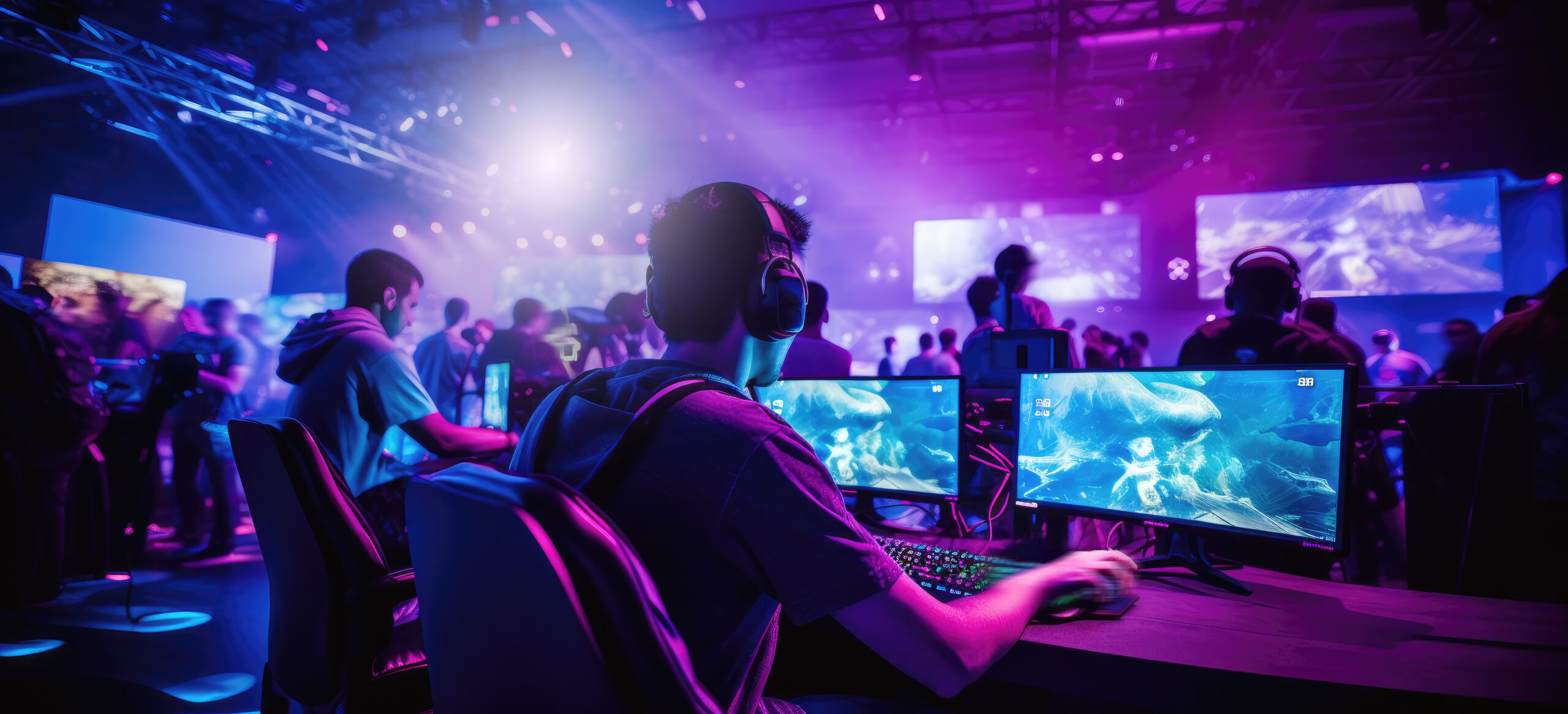Shen Milsom & Wilke is currently providing acoustics, information technology infrastructure and security consulting services for the SURGE Esports Arena in Chicago’s Bronzeville neighborhood near the notable McCormick Place. The arena will serve professional gamers and host gaming events, with a capacity of over 1,000 gamers and spectators. The new facility is designed to include a restaurant, player’s lounge, broadcast center and IMAX-style screen within the building’s façade, private event space, office and support spaces.
Additionally, SM&W is currently providing AV and information technology consulting services for the University of Albany Esports facility in the Uptown campus, teaming with CSArch, based in Albany. It will feature high-performance gaming PCs, console stations, a broadcasting/media creation room, and a large spectator area for fans.
In this article, we will discuss some best practices that are being employed in designing these projects and others we are currently working on. Acoustics, AV, Information Technology and Security considerations are critical in designing a successful facility. Each facility will be unique but in general, we believe that the following ideas and concepts are important to evaluate.
Study Sightlines and Viewing Areas:
Facility space constraints (such as ceiling heights, arena layouts, stadium seating, overhead monitors) require careful study of audience and presenter sight lines to ensure all participants have equitable and unobstructed viewing experiences regardless of their position within the arena. Displays must be sized appropriately for audience viewing distances and have high refresh rates to present game content at native computer frame rates (120 Hz, 144 Hz). Fans, sponsors, and family members should have a different view than the gamers and the referees. Additionally, gamers should not be interrupted or distracted by the audience visually or audibly, but it is equally important for the view to not be significantly delayed so the audience feels a “real-time” connection to the game in progress.
The space should be designed to accommodate various types of events from casual gaming nights to competitive tournaments. The utilization of movable furniture, modular systems, versatile lighting and audio distribution will make this space very desirable and easy to adapt.
It is important to ensure each gaming station has ample space, ergonomic seating, and proper equipment such as high-performance PCs or consoles, high-quality monitors, and comfortable peripherals like headsets, keyboards and mice. Noise-cancelling headsets with microphones are key to inter-team communications. In addition, it is important to have sufficient power provisions for peripherals, USB charging stations, and the like. The use of gels, and UV containers, etc. can mitigate these risks. Lastly, low latency and high bandwidth are critical in the gaming environment. An additional 10 milliseconds of latency can create unfair advantages for players and a lousy experience for spectators. The presence of latency in a network design can result in winning or losing a game.
Acoustic Considerations:
Soundproofing is crucial to minimize distractions between gaming stations. Additionally, consider the acoustics of the space to enhance the gaming experience without excessive noise interference from audiences who may be enveloped in the game.
Security Measures:
A best practice is to implement security measures to protect equipment and ensure the safety of gamers and visitors, via the use of surveillance cameras, access control systems, and staff monitoring.
Network Measures:
Early on, discussions around the facility’s network security postures should be had with the right people. Carefully consider adding redundancy, bandwidth calculations, minimizing latency, and reviewing firewall requirements. Segmenting the gaming traffic on a dedicated VLAN or subnet is strongly recommended and should be coordinated with the facilities IT team to be sure the strategy is fitting for the existing infrastructure. Performance can also be affected by content filtering. While this is not often a factor from the design side, it can be a crucial coordination item.
Highly competitive events are subject to cheating and hacking within online games, so controlling what you can on your network is crucial.
An example of in-game compromise would be Apex Legends’ North America finals for its Global Series championship. The Verge recently reported the event was postponed “over concerns that hackers have compromised the ‘competitive integrity’ of the game. Two professional players from major teams were targeted while livestreaming by an attack that forcibly applied advantage-granting cheats during competitive gameplay.”
Use adjustable lighting to create ambiance and reduce glare on screens. Consider implementing customizable lighting schemes to match the mood or branding for different gaming events.
Lighting throughout the area is customized to provide task lighting as well as lighting that doesn’t wash out the displays or cause eye strain for the gamer.
Broadcasting and Streaming Setup:
Design a dedicated area for commentators, analysts, and production crews with proper lighting, multiple camera angles, soundproofing, and broadcasting systems to support live streaming and recording of events.
The ability to stream to platforms such as Twitch, YouTube, etc. is just as important to other Gamers and their fans as being in the audience. The stream has to continue uninterrupted without locking up or with distracting latency.
Accessibility:
Ensure the facility is accessible to all individuals, including those with disabilities, by implementing features such as ramps, wide doorways, and adjustable-height gaming stations. Gaming consoles and PC’s have accessible controllers for gamers as well. Include assistive listening systems which are tied into personal smartphones for ease of access to program content for those with hearing challenges. Multiple-language simulcast for international competitions may also be a consideration.
Future-Proofing:
Stay updated on emerging technologies and trends in the Esports and presentation industry to future-proof the facility and remain competitive in the long term.
In conclusion, SM&W is currently providing acoustics, AV, Information Technology and Security consulting services for many esports studios and arenas from educational facilities to professional sites. SM&W’s scope of work generally includes a significant amount of coordination between architects and the end-users and schematic design through construction administration. The SM&W team offers a turnkey solution for designing your world-class Esports facility, leveraging our comprehensive consulting services.
To learn more, please contact:
Partner
Shen Milsom & Wilke (SM&W)
125 S. Wacker Drive, Suite 1510, Chicago, IL 60606
D: 312.756.0124 | M: 312.310.4306



